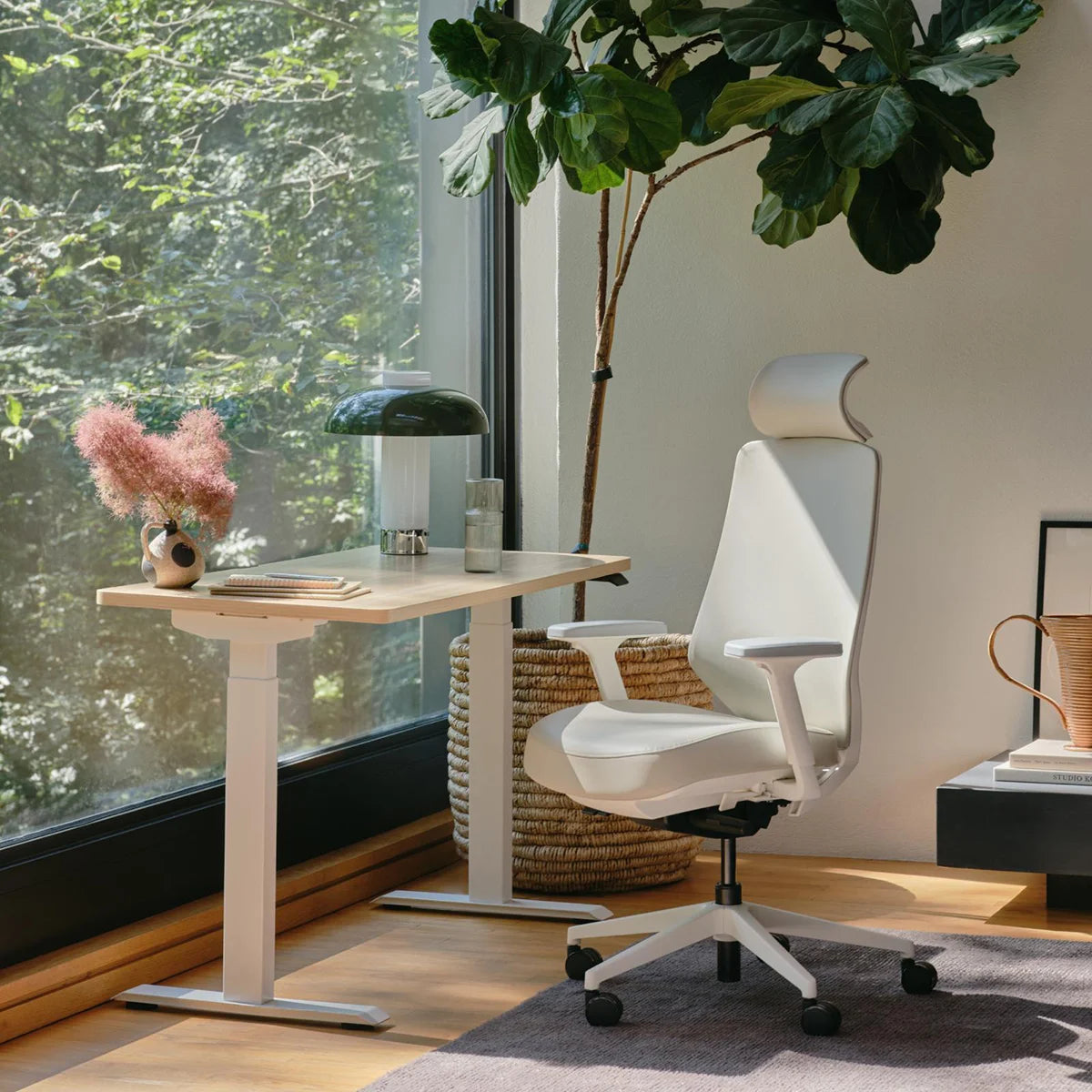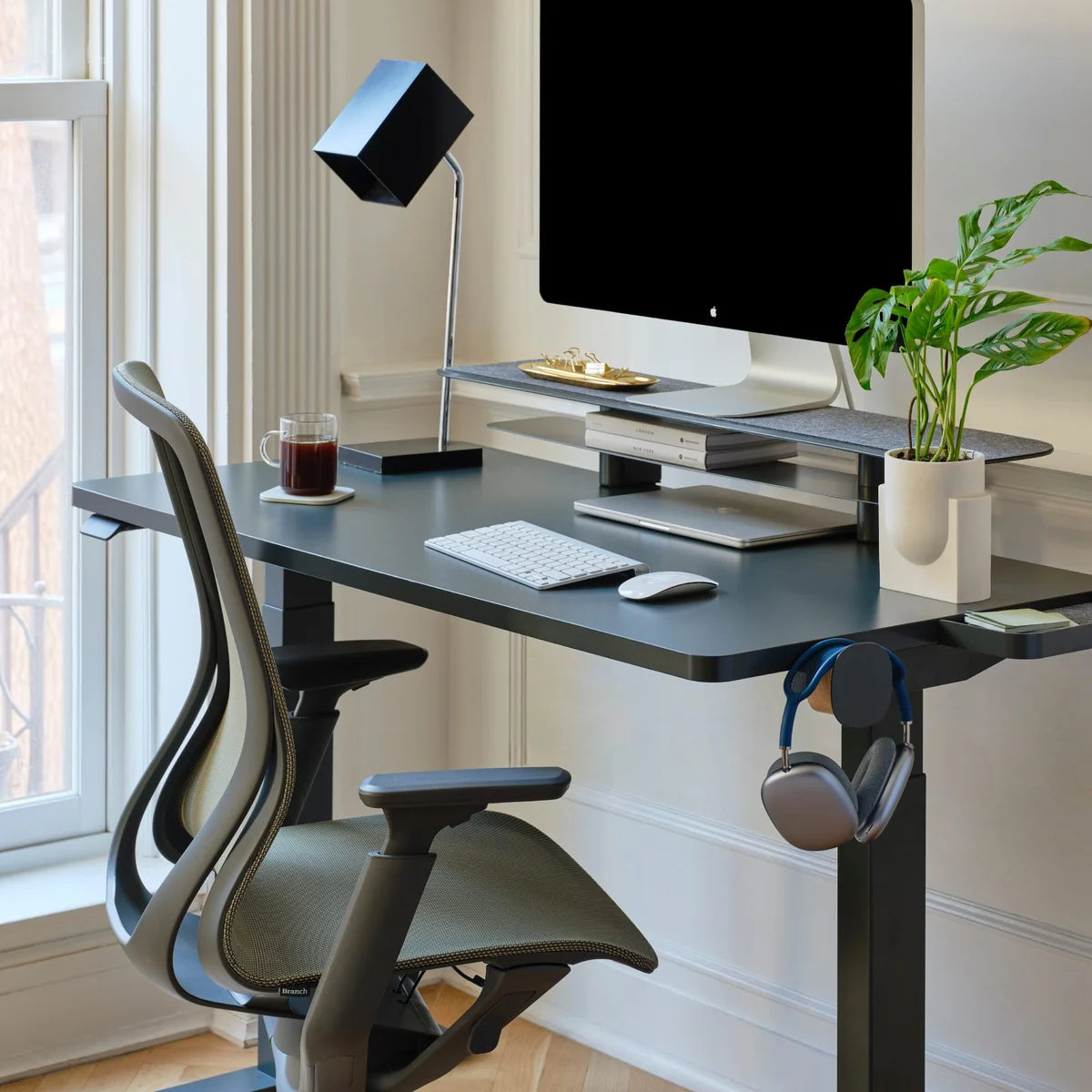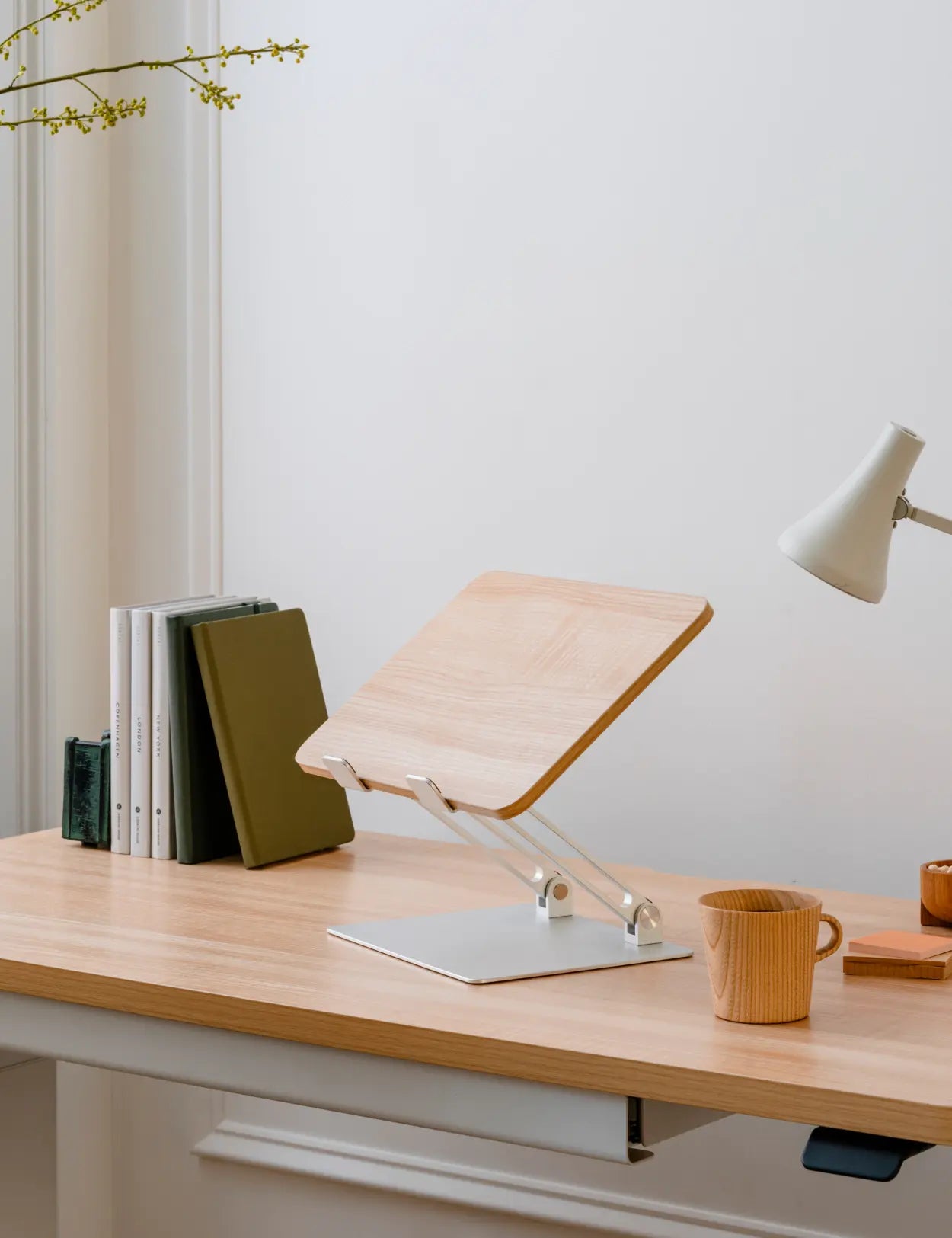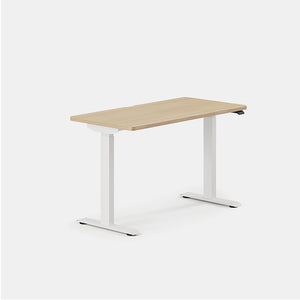If you decide to start using a sit-stand desk, think about all the options and thoughtfully evaluate how it will be used. Standing desks are not a one-size-fits-all solution; think about your individual needs and preferences when determining which desk is right for you.
Desk Height
To get the full benefit of a sit-stand desk, you’ll need to know what desk height is best for you. If you’ll be sharing a standing desk with other employees, finding a desk with a wide range is best.
To find the best height range, rest your arms at your sides and bend your elbows so that your forearms are parallel to the ground. Measure the height from the bottom of your elbow to the floor. That measurement is the height you’ll need an adjustable desk to be at when standing.
Our Standing Desk is the perfect option for shared users with an extended lift range of 25” to 52”, which can accommodate someone as tall as 6’8”. You can also find and save the perfect height with the centimeter-level adjustment.
Desk Depth
Different styles of standing desks come in a variety of depths depending on the intended use. The standard depth size is 30”, which allows enough room for your devices, accessories, and office supplies.
If you only need room for writing or a small laptop, you can work with a smaller footprint. Most users need a desk in the 26” to 34” deep range.
Ease of Use
There are several ways to raise or lower desks, but if the mechanism is loud or intrusive, you’re less likely to use it very often. Electric or pneumatic lifts tend to be the most quiet and easy to use.
Obviously, if you choose a height-adjustable desk that requires power, you’ll need an outlet nearby. That probably sounds like a no-brainer, but it can easily get overlooked with so many decisions being made. Bring your power source closer to your desk with accessories like Freestanding Power Strips or integrate electricity to your workstation with In-Desk Power.
Efficiency and Functionality
We all want a home office desk that fits in with our design aesthetic, but more importantly, you need to consider if the desk can accommodate your work needs. Think about your work environment and whether you’re going to need privacy screens, specific lighting, or tool rails.
Some standing desks powered electronically can be programmed for different settings, making it even easier to use the proper office ergonomics every time. Set an alarm on your phone for when it comes time to change up your posture.
Leg and Foot Fatigue
If you’re prone to aches and pains after long periods of being on your feet, slowly ease into more standing during the workday.
You may need to start wearing more supportive shoes or add a footrest under the desk to support one foot while standing. Sometimes a simple stretch on each foot is all you need to stay comfortable longer.
You can also invest in a high-quality anti-fatigue mat to provide more comfort while standing and working. Anti-fatigue books have been reported to decrease discomfort after standing for four hours.














